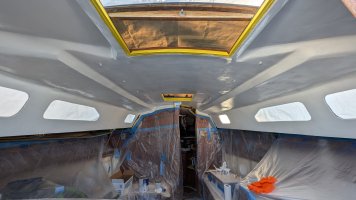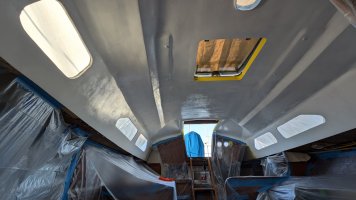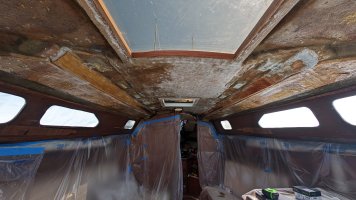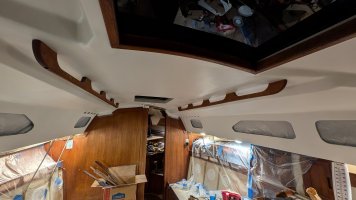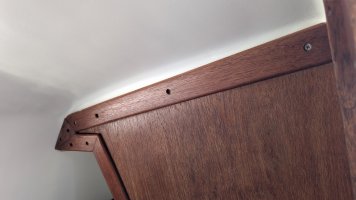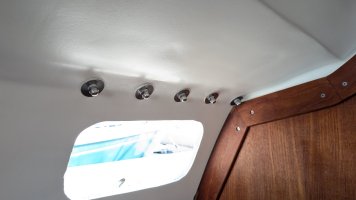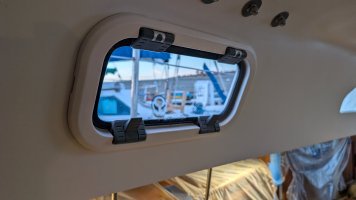Updates! Pt. II
...Continued from aboveMidship Hatch
The center hatch of the boat was not fair with the rest of the ceiling. Filled with 410 and laminated with two layers of 10oz cloth. By this time, I was a few month into working with composites and it was pretty routine to get things filled and laid up.
Vertical Grab Bar
There is a vertical bar that attaches to the partial bulkhead which separates the chart table from the salon seating. Before the headliner was pulled down it had some scrap lumber attached to the ceiling to make a "level" surface to which it was bolted.Now that's gone and not "level" (I put it in quotes, because nothing on a boat is really level, right?) I made a large pot of 404 (for strength), 406 (for non-sag), and 407 (for easier sanding). I applied that roughly to create a mount of putty that stood proud from the ceiling.
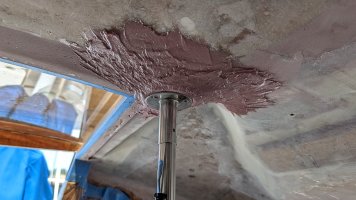
Next I waxed the pipe's stainless steel mount and temporarily mounted the post in place. I used a pick tool and a hammer to jam the mount into the putty and let it cure. After breaking it free from the cured epoxy, I sanded the mound to an attractive shape with a flat surface and glassed over it with a layer of X-mat and three layers of 10oz fabric. Now there is enough glass I can land a few pilot holes for screws for the mount later.
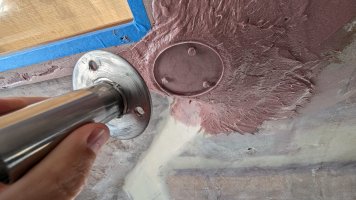

Other Things
- Companionway wood trim - I used plastic wrap and wax to shape the putty around the wood trim pieces in the cabin so that the faired ceiling would meet the wood trim without a gap. Laminated over.
- Aft corners of the cabin - created nonstructural fillets to blend the ceiling into the nice teak bulkheads
- Portlight veneer - Sanded it all down and applied local fairing to the parts of the veneer that delaminated and peeled off. I'm planning to apply several coats of un-thinned epoxy to the wood to seal it up. Then sand and final fairing with the rest of the deckhead.
What's Next?
Final fairing.Sanding.
Painting.
I've chosen Awlgrip as my preferred paint. I know it's overkill for inside the cabin, but it will last a long time and be more resilient to stresses. Plus, I could use some practice rolling & tipping for when I paint some exterior parts of the boat. I'm leaning towards Awlgrip 545 Epoxy Primer and then a topcoat that matches the old headliner with enough flattener to make it either semi-gloss or matte finish. Semi-gloss will probably be easier to clean without being too bright.
I might try painting the portlight veneer with whiteboard paint, which would create a dry-erase board for keeping notes to myself under way.
I've kept and labeled all the original teak trim pieces and expect to put most of those back up. I think it will give the cabin a combination of modern and classic looks.


